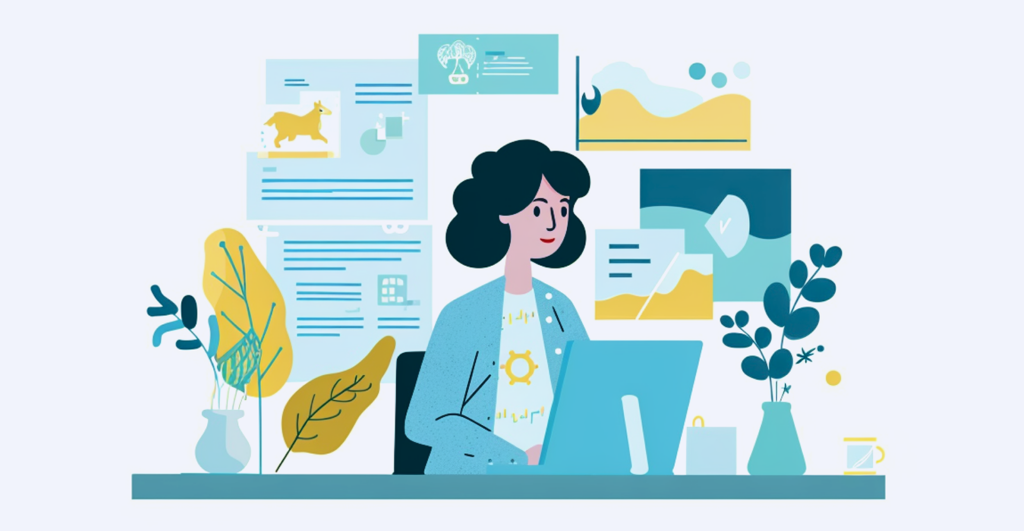- Accessibility, Digital Accessibility, Human-Centered Design, Inclusive Design, User Experience
Accessibility isn’t just about compliance — it’s about inclusion. A deaf developer shares what UX designers need to know to create better experiences.
- The article talks about a deaf developer who shares insights on digital barriers, assistive tech, and inclusive design.
- It presents a candid conversation on UX challenges, assistive technology, and advocating for better accessibility.
- The piece dives into the challenges and solutions for creating truly accessible experiences.
Share this link
- February 11, 2025

- Design Thinking, Human-Computer Design, Human-Computer Interaction, Publishing, UX Design, UX Research
Publishing in HCI and design research can feel overwhelming, especially for newcomers. This guide breaks down the process — from choosing the right venue to writing, submitting, and handling revisions. Whether you’re aiming for conferences or journals, learn key strategies to navigate academic publishing with confidence.
- The article provides a guide to publishing in Human-Computer Interaction (HCI) and design research, sharing insights from the author’s PhD experience.
- It explains the significance of publishing in academia and industry, offering an overview of peer-reviewed journals and conferences.
- It breaks down the two main types of papers — review and empirical — detailing their structures and acceptance criteria.
- The piece emphasizes strategic research planning, collaboration, and selecting the right venue for submission.
- The piece also outlines practical steps for writing, revising, and handling rejections, encouraging persistence and learning from reviewer feedback to improve publication success.
Share this link
- February 6, 2025

- Cognitive Science, Consciousness, Neuroscience, Philosophy, Psychology
What is consciousness? This question has baffled the traditional physicalist approach to science. Part of the reason is that reductive physicalism is flawed, as it fails to effectively frame complexification, systems, processes, and the difference between objective and subjective epistemologies. This article introduces a new philosophical approach called “Extended Naturalism,” which extends both our view of the physical world and our understanding of the mental domain and enables the puzzle to be effectively framed so that we can achieve a coherent picture of the whole.
- This article provides an overview of a new approach to understanding consciousness called “Extended Naturalism.” Extended naturalism shifts the basic framework for understanding matter and mind from a traditional “physicalist” perspective to a holistic naturalistic perspective.
- This perspective alters the grammar of science, nature, mind, and knowledge and affords a new way to coherently align consciousness with the matter.
- The article explains how Extended Naturalism is different from materialism, idealism, panpsychism, and dualism, and allows us to address both the question of what consciousness is and how it works in the natural world.
Share this link
- February 4, 2025

Share this link
- February 1, 2025

- Collaboration, Creativity, Design Thinking, Innovation, Space Planning, User Research, Workplace Transformation
How can thoughtful workspace design transform collaboration and creativity? Discover how a human-centered approach reimagined 21,940 square feet into a flexible, inspiring environment that employees love.
- The article explores how human-centered workspace design can improve collaboration, flexibility, and creativity by addressing employee needs.
- It highlights solutions like open zones, quiet spaces, and pod-like configurations, showing how these changes boosted teamwork and morale.
- The piece emphasizes the value of co-creation, adaptability, and clear communication in rethinking office spaces.
Share this link
- January 30, 2025

- Design Tools and Software, Design Workflow, PowerPoint, Presentation Design, Visual Design
Struggling with PowerPoint’s design limitations? This step-by-step guide shows you how to build systematic design solutions, from mastering slide layouts to using sticker sheets for patterns. Learn to create polished, professional presentations with smart workarounds and helpful tips.
- The article gives a step-by-step guide to building systematic patterns in PowerPoint. It talks about the program’s limitations and gives essential tips like mastering slide layouts and customizing text settings.
- It suggests using PowerPoint’s automated features carefully and advocating for manual workarounds to elevate quality.
- The piece introduces creating sticker sheets for reusable design components and highlights strategies for successful workflows.
Share this link
- January 28, 2025


